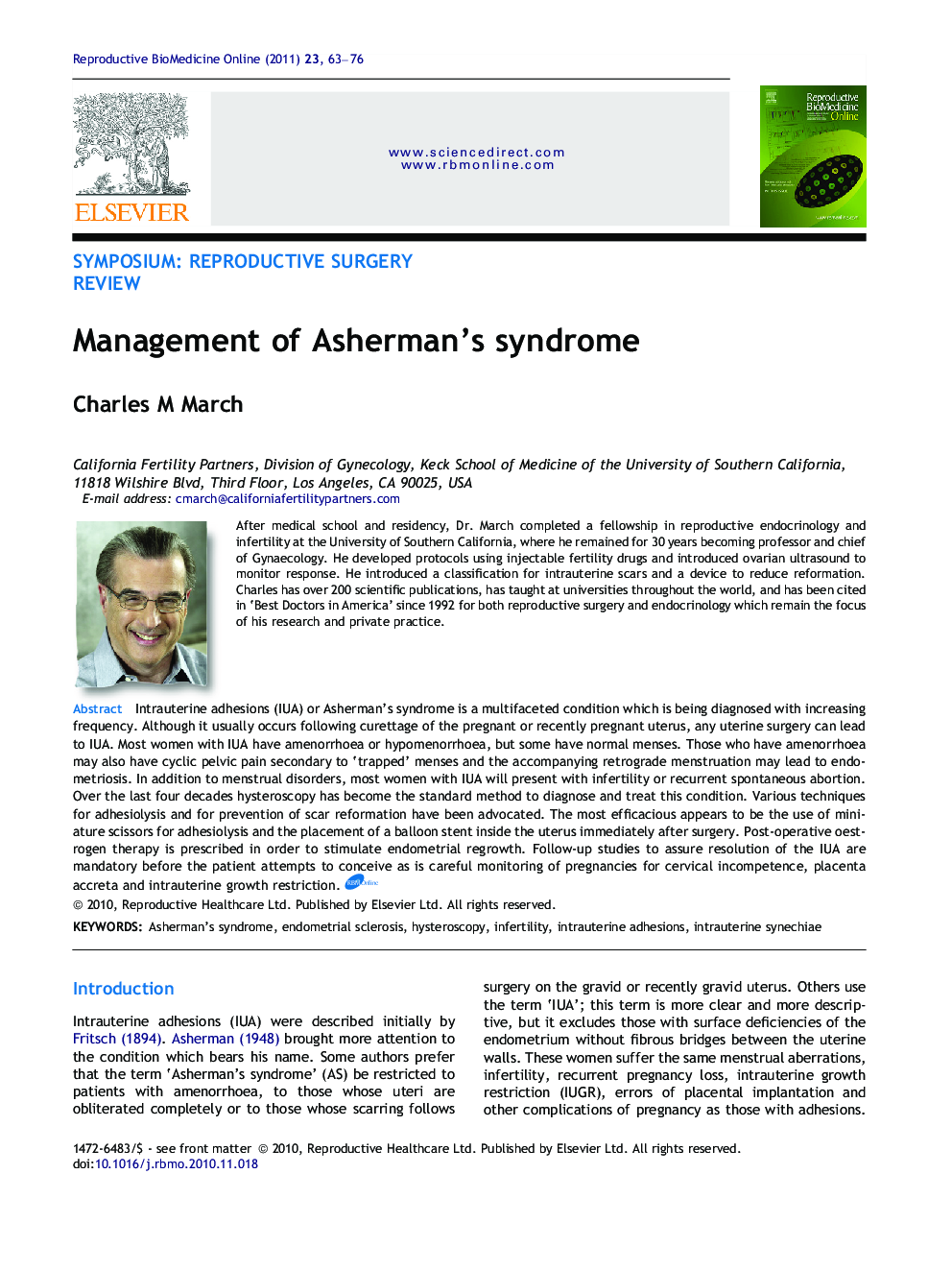| Article ID | Journal | Published Year | Pages | File Type |
|---|---|---|---|---|
| 3971476 | Reproductive BioMedicine Online | 2011 | 14 Pages |
After medical school and residency, Dr. March completed a fellowship in reproductive endocrinology and infertility at the University of Southern California, where he remained for 30 years becoming professor and chief of Gynaecology. He developed protocols using injectable fertility drugs and introduced ovarian ultrasound to monitor response. He introduced a classification for intrauterine scars and a device to reduce reformation. Charles has over 200 scientific publications, has taught at universities throughout the world, and has been cited in ‘Best Doctors in America’ since 1992 for both reproductive surgery and endocrinology which remain the focus of his research and private practice.Although scars can develop inside the uterus after any type of surgery, the most common antecedent factor is a dilation and curettage (D and C) performed because of a miscarriage, abortion or heavy bleeding after a delivery. The most common symptom is scanty or absent menstrual flow; however, some patients have normal periods and others have infertility, repeated miscarriage or pelvic pain. Diagnosis is by a saline infusion ultrasound or hysterosalpingogram (HSG), an X-ray study in which an iodine dye is placed into the uterus. Treatment is via hysteroscopy; a small telescope is placed in the uterus and the scars are identified and cut with miniature scissors. Most physicians place a stent inside the uterus in order to keep the walls apart after surgery and prescribe oestrogen in order to promote growth of the uterine lining. It is mandatory to verify that the uterus has healed before recommending that a patient attempt to conceive; this verification may be done by another HSG, saline ultrasound or hysteroscopy in the doctor’s office. Complications during pregnancy can be severe and it is important that the patients be monitored closely for any problems such as a weak cervix which may lead to miscarriage or very early delivery or a placenta which becomes embedded in the uterine wall. The greater use of medical management of miscarriage and of retained products of conception after a D and C or a delivery will reduce the frequency of this condition.
